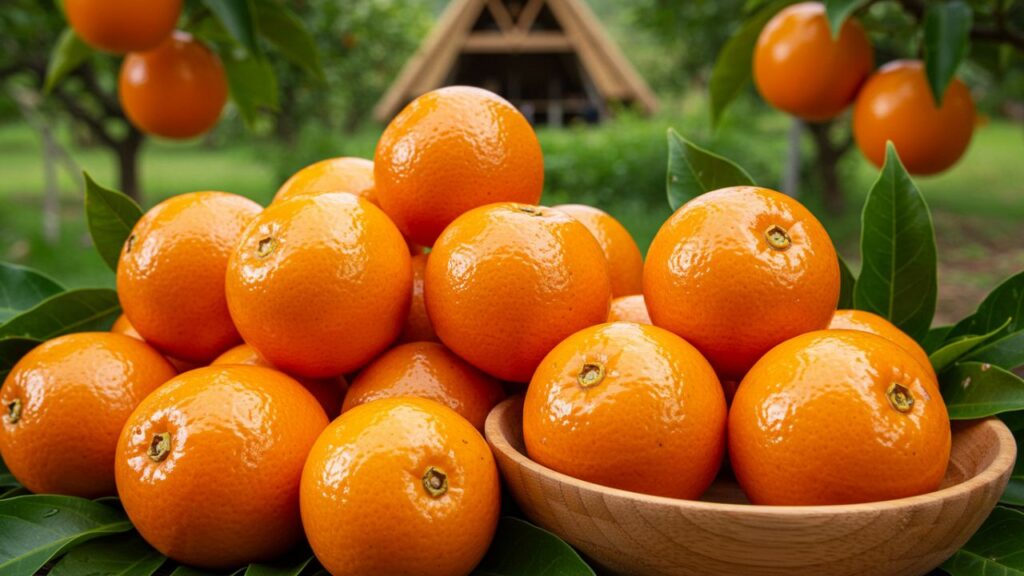The fruit known as žižole is more than just a seasonal snack. With its sweet taste, rich nutrition, and deep cultural heritage, žižole has been cherished for centuries across many regions. Often compared to dates or apples, this small fruit carries both health value and symbolic meaning, making it a true bridge between tradition and modern wellness.
Today, as interest in natural and functional foods grows, žižole is gaining recognition as a potential global superfruit. This article explores everything about žižole—from its origins and nutrition to its health benefits, culinary versatility, and cultural symbolism.
Žižole: What Exactly Is It?
Žižole is the regional name for the fruit of the jujube tree (Ziziphus jujuba). The fruits are oval, ranging in size from small olives to larger dates. Their color transitions from bright green to deep reddish-brown as they ripen. The flavor profile changes as well—tart and crisp when fresh, and sweet, chewy, and date-like once dried.
Originating in Asia, žižole spread across the Mediterranean and Middle East, where it became a staple in gardens and kitchens. The trees thrive in warm, dry climates and are known for their resilience, making them an ideal crop in challenging soils. For centuries, žižole has been enjoyed not only as food but also as medicine and even as a cultural symbol.
Nutritional Value of Žižole
Part of what makes žižole so enduring is its impressive nutritional profile. Despite its small size, it offers a powerhouse of nutrients:
-
Vitamin C – boosts immunity, promotes collagen production, and supports skin health.
-
Antioxidants – combat free radicals, protecting the body against oxidative stress.
-
Dietary Fiber – aids digestion and supports a healthy gut.
-
Potassium – contributes to heart health and stable blood pressure.
-
Flavonoids – plant compounds with proven anti-inflammatory effects.
Low in calories but dense in nutrients, žižole fits perfectly into the category of natural superfruits.
Health Benefits of Žižole
Modern studies and traditional knowledge both highlight the wide-ranging health benefits of žižole. Some of the most notable include:
-
Strengthening immunity: High vitamin C levels protect against illness.
-
Supporting relaxation and sleep: Used traditionally as a calming aid.
-
Improving digestion: Its fiber content helps regulate bowel movements.
-
Protecting heart health: Potassium and antioxidants safeguard cardiovascular function.
-
Anti-aging effects: Antioxidants reduce cellular damage and keep skin youthful.
Taken together, these benefits make žiž-ole a valuable addition to modern diets focused on balance and natural wellness.
Žižole in Traditional Medicine
For centuries, žižole has been trusted in folk remedies. Ancient Chinese medicine used it in tonics to restore energy, reduce stress, and calm the mind. In Mediterranean regions, it was consumed as a natural cure for colds, fatigue, and digestive troubles.
Such uses highlight how deeply embedded žiž-ole is in cultural approaches to health. Even today, many communities turn to this fruit as part of herbal treatments and daily wellness practices.
Culinary Uses of Žižole
One of žižole’s greatest strengths is its culinary versatility. It adapts easily to both sweet and savory preparations.
Popular uses include:
-
Fresh fruit: Crisp and slightly tart, eaten raw like apples.
-
Dried fruit: Sweet and chewy, similar to dates or raisins.
-
Teas and infusions: Used for calming and digestive benefits.
-
Desserts: Added to cakes, jams, and syrups.
-
Savory dishes: Paired with meats, rice, or stews for added flavor.
This adaptability makes žižole a staple fruit in many kitchens, both traditional and modern.
Cultural Importance of Žiž-ole
Beyond nutrition, žižole carries strong symbolic meaning. In many traditions, it represents good luck, prosperity, and long life. Dried žižole was often gifted during weddings and festivals as a token of blessings.
In Mediterranean villages, planting žiž-ole trees was considered a sign of resilience and abundance. Families valued the tree not just for fruit, but as a symbol of health and community strength.
Farming and Sustainability of Žiž-ole
Žižole trees are beloved by farmers for their resilience. They thrive in rocky, dry soils with minimal water requirements, making them highly sustainable. Naturally resistant to pests and tolerant to drought, these trees require little intervention to produce fruit.
This sustainability makes žiž-ole an environmentally friendly crop, supporting both local economies and ecosystems.
Rising Modern Interest in Žižole
In recent years, žižole has been rediscovered as people seek natural, nutrient-rich foods. Its antioxidant profile and unique taste have brought it into:
-
Health food stores
-
Superfood powders
-
Herbal teas
-
Natural supplements
-
Gourmet culinary markets
This revival ensures žižole remains relevant for future generations while retaining its cultural roots.
Easy Žiž-ole Recipes to Try
Adding žižole into your meals can be both fun and nourishing. Here are a few simple recipes:
-
Žiž-ole tea: Steep dried fruits with lemon and honey.
-
Energy bites: Blend dried žižole with nuts and oats.
-
Fruit salad: Fresh ži-žole slices mixed with seasonal fruits.
-
Jam: Slow-cook žižole with citrus and sugar for a spread.
-
Rice pilaf: Add dried žiž-ole for a sweet and savory flavor.
These recipes show how easily žiž-ole can be incorporated into daily meals.
Best Ways to Store Žiž-ole
To keep žižole fresh and flavorful:
-
Store fresh fruit in a cool place and consume within a week.
-
Keep dried žiž-ole in airtight containers for months.
-
Refrigerate cut or prepared fruit to extend freshness.
With these tips, you can enjoy žiž-ole both immediately and long term.
Looking Ahead: The Future of Žiž-ole
With its rich nutrition, cultural heritage, and sustainable farming potential, žižole is well-positioned to earn global recognition as a modern superfruit. Its adaptability makes it suitable for supplements, teas, desserts, and gourmet dishes.
As interest in natural superfoods continues to rise, žiž-ole could soon stand alongside popular names like acai and goji berries, offering both flavor and health to global markets.
Final Thoughts
Žižole is far more than a seasonal fruit—it is a symbol of resilience, health, and tradition. Rich in vitamins, antioxidants, and history, it bridges the gap between ancient remedies and modern superfoods.
By reintroducing žižole into our diets, we not only gain health benefits but also honor a cultural heritage that has valued this fruit for centuries. With its growing global recognition, žiž-ole is poised to shine as one of the world’s most valuable natural foods.





